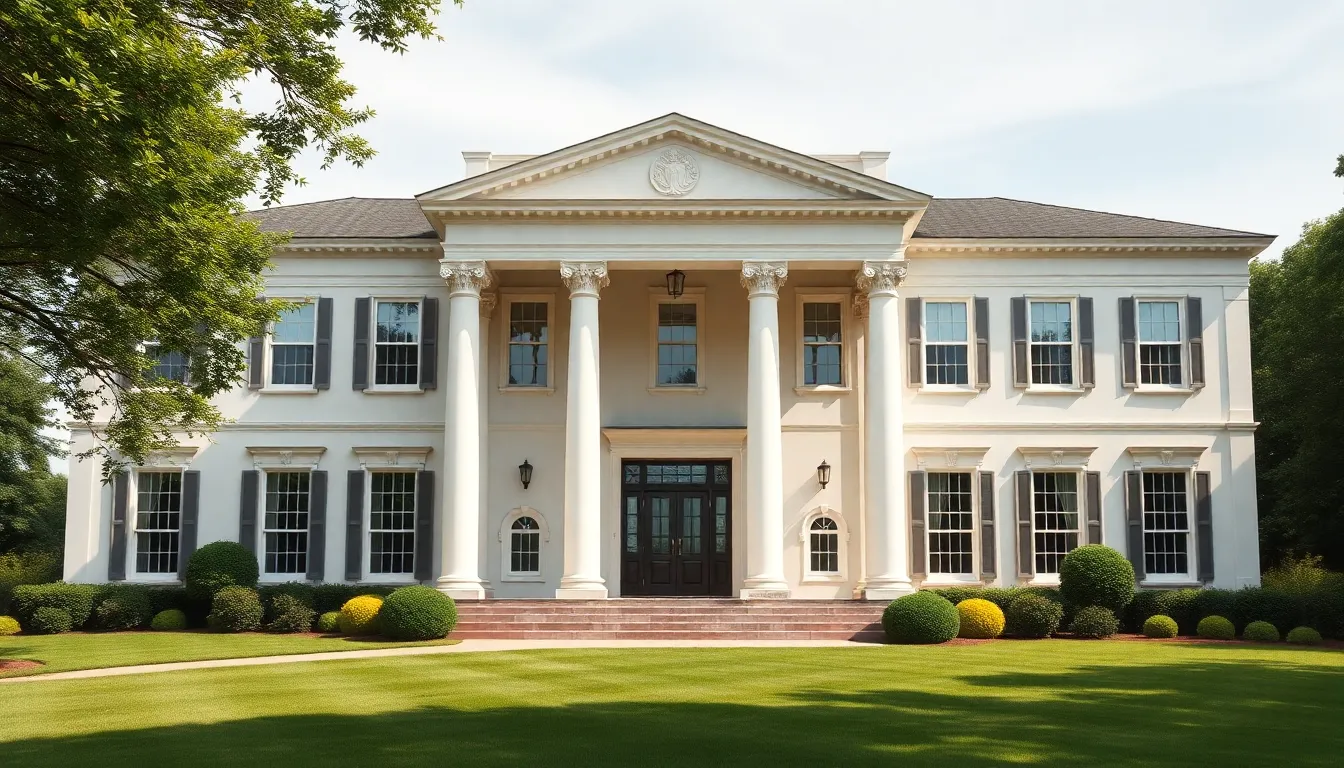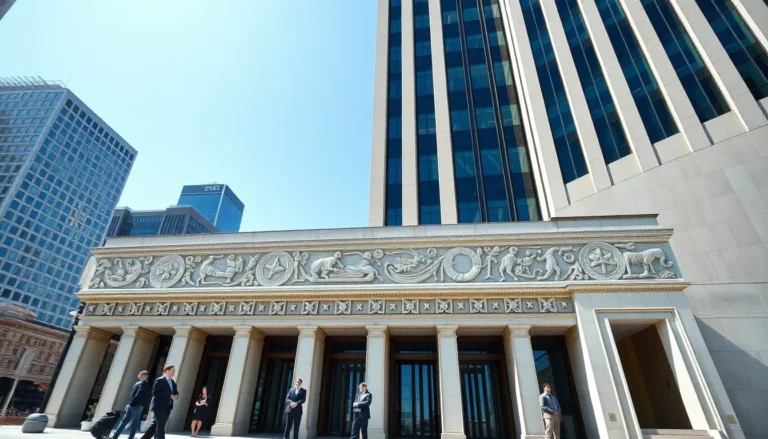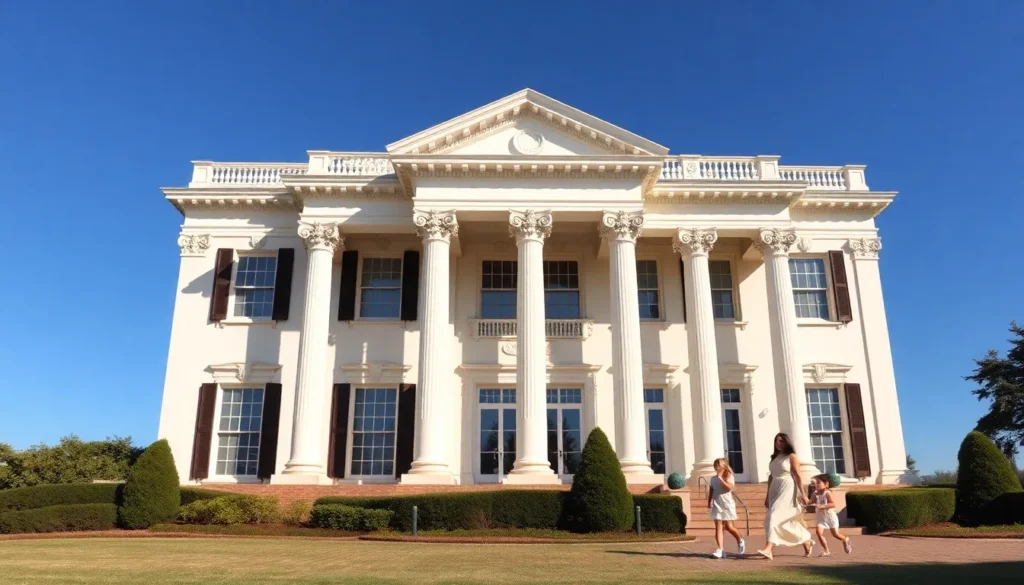Table of Contents
ToggleNeoclassical architecture houses are like the cool kids of the architectural world—timeless, elegant, and always turning heads. With their grand columns, symmetrical designs, and a flair for the dramatic, these homes embody a style that whispers sophistication while shouting, “Look at me!” Imagine walking into a living space that feels as if it’s been plucked straight from a history book, yet still manages to be the envy of all your friends.
But don’t let the classic vibe fool you. Neoclassical homes blend tradition with modern comforts, creating a perfect balance between old-world charm and contemporary living. Whether it’s hosting a dinner party or simply enjoying a quiet evening, these houses offer a backdrop that’s as impressive as your culinary skills—or at least as impressive as the takeout you ordered. Dive into the world of neoclassical architecture and discover why these homes are more than just a pretty facade; they’re a lifestyle statement.
Overview of Neoclassical Architecture House
Neoclassical architecture houses embody elegance and sophistication, showcasing timeless design elements. These homes reflect an influential architectural style that emphasizes classic beauty.
Historical Context
Neoclassical architecture emerged in the mid-18th century as a response to the ornate Baroque and Rococo styles. Influenced by the Renaissance revival of ancient Greek and Roman principles, it gained popularity in Europe and North America. Key figures like Robert Adam and Thomas Jefferson played significant roles in promoting this style. Jefferson’s Monticello and the Virginia State Capitol exemplify neoclassical design’s impact on American architecture. By the early 19th century, neoclassicism served as a cultural statement, symbolizing democracy and civic virtue.
Key Characteristics
Neoclassical houses exhibit distinct features that create their unique identity. Grand columns, often inspired by classical orders, act as a defining element. Symmetry dominates the layout, ensuring balanced proportions in both façades and interiors. Elaborate cornices and pediments enhance visual appeal, while large windows allow natural light to penetrate. Built from durable materials, these homes emphasize long-lasting construction. Decorative motifs often include friezes, pilasters, and porticos, reinforcing their classical heritage. Overall, a neoclassical architecture house effortlessly combines grandeur with functional living spaces.
Prominent Features of Neoclassical Architecture Houses

Neoclassical architecture houses showcase distinctive features that reflect their elegance and grandeur. Prominent elements include symmetry, proportion, and elaborate use of columns.
Symmetry and Proportion
Symmetry forms the backbone of neoclassical design, ensuring balanced visual appeal. Each facade displays an arrangement where one side mirrors the other, creating harmony. Proportions align with classical ideals; for instance, windows and doors maintain specific ratios to enhance aesthetics. These principles resonate through the layout of spaces, both inside and out. Overall, the deliberate arrangement of elements invites admiration and suggests refinement.
Use of Columns and Porticoes
Columns stand as hallmark features of neoclassical houses, often found parading along the exterior. They serve not only as structural supports but also as stunning visual focal points. Porticoes frequently accompany these columns, offering a grand entrance that draws attention. Various column styles, such as Doric, Ionic, and Corinthian, add character and indicate the home’s historical influences. The incorporation of these architectural elements amplifies the sense of grandeur and invites admiration from all who approach.
Famous Examples of Neoclassical Architecture Houses
Neoclassical architecture features several iconic homes that embody its grandeur and elegance. A few notable examples showcase the distinct characteristics of this architectural style.
The White House
The White House serves as the official residence of the President of the United States. Designed by James Hoban, its construction began in 1792 and reflects neoclassical elements, including its symmetrical shape and imposing columns. The iconic portico boasts Corinthian columns that create an impressive entrance. Focal points of the design include the central facade and the decorative pediment, both emphasizing balance. The White House not only symbolizes the nation but also highlights the adaptability of neoclassical architecture in a modern context.
Monticello
Monticello, designed by Thomas Jefferson, stands as a prominent example of neoclassical architecture in America. Completed in 1809, this plantation house features a perfect blend of classical proportions and innovative design elements. A striking aspect is the domed roof, which captures attention and conforms to neoclassical principles. The exterior showcases porticoes and expansive windows, enhancing the tranquil atmosphere. Jefferson’s Monticello illustrates a commitment to classical ideals while incorporating personal touches, representing both the architect’s vision and the elegance of neoclassical aesthetics.
Advantages of Neoclassical Architecture Houses
Neoclassical architecture houses offer several compelling benefits that attract homeowners and enthusiasts alike.
Timeless Aesthetic
Timeless elegance characterizes neoclassical architecture, ensuring these homes retain their beauty across generations. Design elements such as grand columns and symmetrical facades create a balanced visual appeal. Each home often stands as a testament to refined taste, allowing owners to showcase classic styles. Natural materials like stone and marble add to the aesthetic charm, further enhancing visual interest. Additionally, the proportion and scale of neoclassical houses inspire admiration, making them suitable for various settings, from urban environments to serene countryside. This architectural style promotes a sense of dignity and permanence that resonates with many homeowners.
Durability and Functionality
Durability defines neoclassical architecture, built to endure the test of time. Strong materials, including brick and stone, contribute to long-lasting structures that require minimal maintenance. Well-planned layouts ensure functionality, providing spacious living areas that suit modern lifestyles. Each home often incorporates large windows to maximize natural light, enhancing overall ambiance and energy efficiency. Versatile spaces within these houses easily adapt to diverse needs, from hosting gatherings to everyday family life. Neoclassical design blends beauty with purpose, making it an appealing choice for those seeking both style and practicality in their living environments.
Neoclassical architecture continues to captivate with its blend of elegance and functionality. These homes not only reflect a rich historical legacy but also adapt seamlessly to contemporary living. Their timeless appeal lies in the grand designs and thoughtful proportions that create inviting spaces.
As homeowners seek a balance between beauty and practicality, neoclassical houses stand out as a compelling choice. With their enduring charm and structural integrity, they promise a lasting investment for those who appreciate the artistry of architecture. Embracing neoclassical design is more than a stylistic decision; it’s a celebration of heritage and modernity intertwined.







